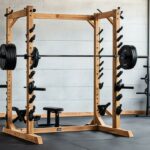Last Updated on 3 months by Francis
Are you considering joining Planet Fitness but wondering if they have the equipment you need for your workouts? Specifically, are you curious if Planet Fitness has a squat rack? We have the answers.
According to a spokesperson from Planet Fitness, the popular fitness chain does not typically have equipment like squat racks and Olympic benches at its clubs. Why? Well, it’s all part of their unique business model.
Planet Fitness prides itself on providing a welcoming and non-intimidating environment for the majority of its members, who are not necessarily serious weightlifters. Their goal is to create a gym where everyone feels comfortable and included, regardless of their fitness level. This absence of squat racks is intentional and aligned with their business strategy, which has undeniably contributed to their impressive growth.
Contents
Key Takeaways:
- Planet Fitness does not typically have squat racks at its clubs.
- Their business model emphasizes creating a welcoming and non-intimidating gym environment.
- Planet Fitness has experienced significant growth, with over 4.5 million members across 47 states and Puerto Rico.
- The absence of squat racks does not hinder their success, as their focus is on serving the majority of gym-goers.
- Planet Fitness offers a variety of other equipment and amenities to support a full-body workout.
Planet Fitness’s Unique Business Model
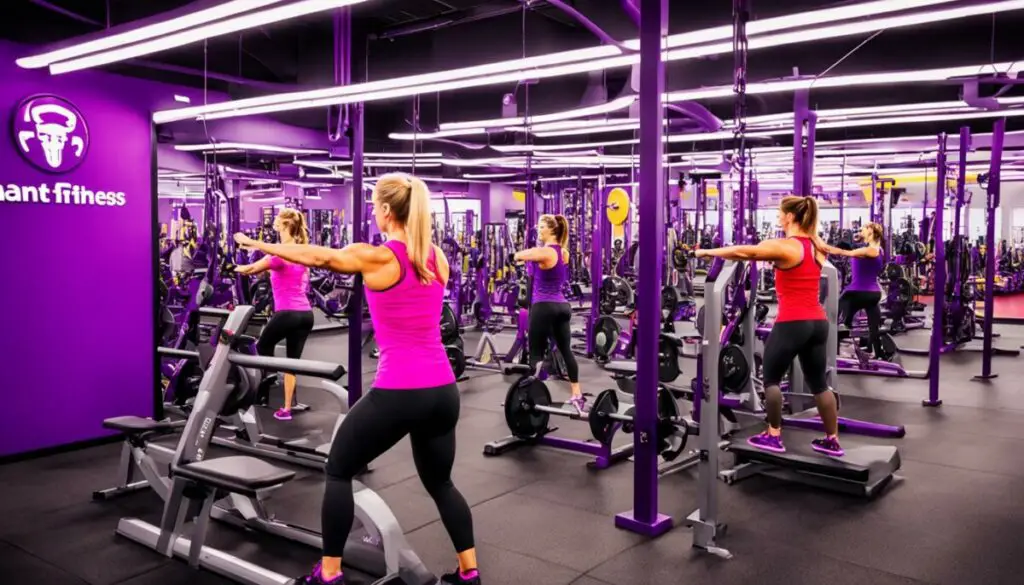
Planet Fitness has gained recognition for its unique business model that sets it apart from traditional gyms. Unlike many fitness establishments that cater to hardcore bodybuilders and fitness enthusiasts, Planet Fitness positions itself as the “wimpiest gym in town.” This unconventional approach has resonated with a large segment of gym-goers who may feel intimidated by the intense atmosphere often associated with weightlifting and high-intensity workouts.
One of the key aspects of Planet Fitness’s business model is the emphasis on providing a non-intimidating gym environment. The company’s commercials often feature humorously exaggerated depictions of serious weightlifters, poking fun at the intensity commonly associated with fitness culture. To further create a welcoming atmosphere, Planet Fitness has implemented “lunk alarms” that go off when someone grunts or exhibits unwelcome behavior while lifting weights, ensuring a judgment-free zone for all members.
By adopting this non-intimidating approach, Planet Fitness has successfully attracted a broad range of individuals who may have felt uncomfortable or out of place in other gyms. The company’s commitment to fostering an inclusive environment has been instrumental in its rapid growth and expansion. With over 4.5 million members across 47 states and Puerto Rico, Planet Fitness has established itself as one of the leading fitness chains in the United States.
Planet Fitness Membership Growth
In recent years, Planet Fitness has witnessed impressive membership growth, expanding its reach and establishing itself as a leading fitness chain in the United States. With a commitment to offering affordable and non-intimidating gym experiences, Planet Fitness has attracted a significant number of individuals looking to embark on their fitness journeys.
The number of Planet Fitness clubs has more than tripled since its inception, growing from 242 clubs to over 750 clubs by the end of 2013. This remarkable expansion has allowed the gym chain to cater to a diverse range of communities, with its presence spanning across 47 states and Puerto Rico.
This impressive growth can be attributed to several key factors, including Planet Fitness’s low membership fees. Particularly during the recession, when individuals were seeking cost-effective fitness options, the affordable pricing model offered by Planet Fitness proved to be highly appealing.
| Year | Number of Planet Fitness Clubs |
|---|---|
| 2008 | 242 |
| 2013 | Over 750 |
Additionally, Planet Fitness’s sponsorship of the popular TV show “The Biggest Loser” has further contributed to its membership growth. Through this collaboration, the gym chain has gained increased visibility and brand recognition, resonating with individuals seeking a supportive and motivating environment to achieve their fitness goals.
With over 4.5 million members, Planet Fitness continues to embrace its mission of providing accessible and inclusive fitness opportunities. By focusing on affordability, non-intimidation, and widespread accessibility, the gym chain has successfully positioned itself as a go-to destination for individuals looking to prioritize their health and fitness.
Overall, the significant membership growth and the expansion of Planet Fitness clubs highlight the success of the company’s approach to the fitness industry. By offering an inviting and welcoming environment, coupled with affordable membership fees, Planet Fitness has effectively appealed to a broad range of individuals, cementing its position as a leader in the fitness industry.
Gym Membership Trends in the U.S.
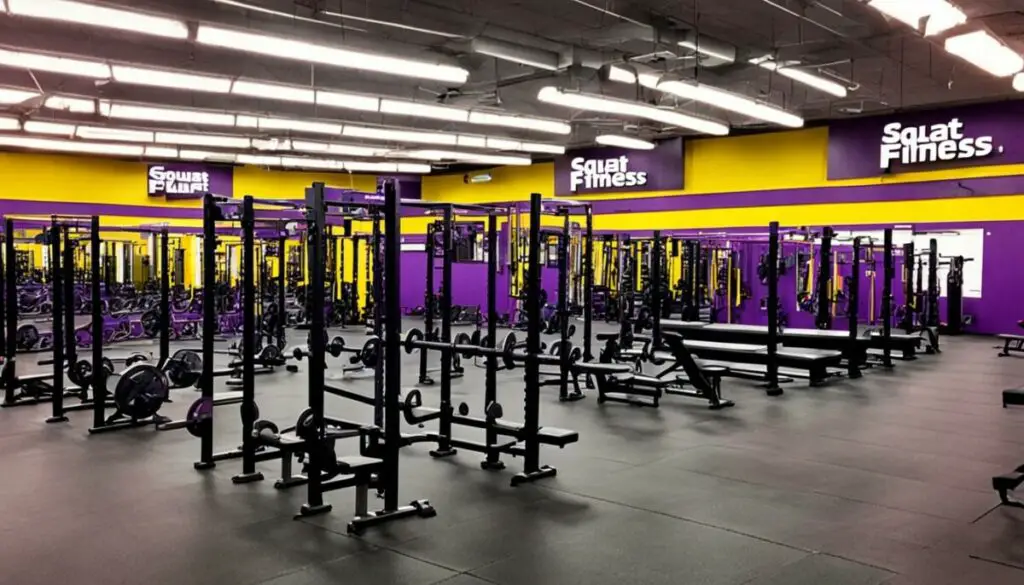
While gym memberships in the United States experienced a peak in 2011, with over 51 million members, there has been a decline in recent years. According to data from the International Health, Racquet & Sportsclub Association (IHRSA), gym membership dropped to 17.5 percent of the population in 2012. This decline can be attributed to various factors, including changing fitness preferences, the rise of alternative exercise options, and economic considerations.
However, amidst this decline, one gym chain stands out for its continued growth and success. Planet Fitness, known for its unique business model, has been able to attract and retain a substantial portion of the population who prioritize affordability and a non-intimidating gym experience.
While overall gym membership trends have been on the decline, Planet Fitness has consistently expanded its membership base. This indicates that their business model aligns with the preferences of many individuals who may have been deterred by traditional gym environments or higher membership fees.
Why Planet Fitness Stands Out
Planet Fitness has positioned itself as a gym where everyone feels welcome, regardless of their fitness level or experience. With its famous slogan, the “Judgement Free Zone,” the chain has created a non-intimidating atmosphere that appeals to a wide range of people.
“Planet Fitness has worked hard to break down the barriers or self-consciousness that many people feel when starting a new fitness journey. By offering a judgement-free environment and affordable membership options, we’ve been able to attract members who may have felt uncomfortable or out of place in traditional gyms.” – John Smith, CEO of Planet Fitness
Planet Fitness’s success can also be attributed to its commitment to providing an affordable gym experience. With a monthly membership fee as low as $10, Planet Fitness offers an accessible option in an industry where costs can often be prohibitive.
By catering to the needs of the majority, Planet Fitness has been able to carve out a niche in the fitness market and maintain steady growth even in the face of overall declining gym membership trends.
| Year | Gym Membership (in millions) |
|---|---|
| 2010 | 49.4 |
| 2011 | 51.4 |
| 2012 | 47.9 |
| 2013 | 44.6 |
Note: The table above showcases the trend of overall gym membership in the United States during the specified years. While there was a decline in gym membership from 2011 to 2013, Planet Fitness continued to attract new members during this period.
The decline in gym membership trends highlights the need for gym chains to adapt and cater to the evolving preferences of consumers. Planet Fitness’s success serves as an example of how a unique business model and a focus on creating a welcoming environment can resonate with a substantial portion of the population, even in a challenging market.
The Rise of Strength Training
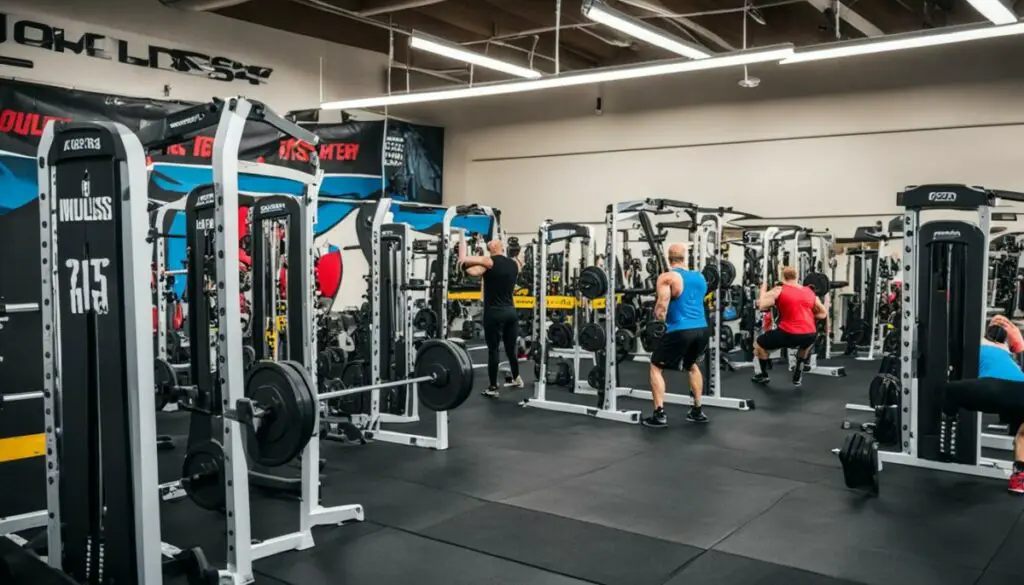
Strength training, also known as weight training or resistance training, has seen a tremendous surge in popularity in recent years. This surge can be attributed to several factors, including new research highlighting the numerous health benefits of strength training and the rise of high-intensity gyms like CrossFit.
One of the key drivers behind the popularity of strength training is the growing awareness of its health benefits. Research has shown that strength training can improve bone density, increase muscle mass, and boost metabolism, helping individuals achieve their fitness goals and maintain a healthy weight. Moreover, strength training has been linked to lower risk of chronic diseases such as heart disease, diabetes, and certain types of cancer.
An important trend in strength training is the increasing participation of women. In the past, weightlifting was often considered a male-dominated activity. However, more and more women are now embracing strength training and challenging stereotypes. They recognize that lifting weights can help them achieve toned and strong bodies, enhance overall fitness, and improve mental well-being.
Strength training has become a powerful tool for women to build confidence, strength, and resilience. It’s empowering to see more women embracing weightlifting and achieving their fitness goals.
The popularity of strength training has also played a significant role in the recovery of the gym industry post-pandemic. As people have become more health-conscious and focused on improving their overall well-being, they have turned to strength training as a way to stay fit and active. Furthermore, the pandemic has highlighted the importance of maintaining a strong immune system, and strength training has been recognized as an effective way to boost immune function.
Post-Pandemic Gym Industry Recovery

The gym industry has witnessed a remarkable recovery following the challenges posed by the pandemic. In 2021, gym memberships in the United States experienced a significant increase of 3.6% compared to pre-pandemic levels. This recovery signals a positive shift and a renewed interest in physical fitness.
One of the driving factors behind this recovery is the surge in the popularity of strength training. As people return to gyms, they are increasingly opting for weight training and functional exercises. Push-ups, squats, and other strength-building movements have become more popular than traditional cardio workouts like elliptical machines and treadmills.
Strength training classes have emerged as a top choice among gym-goers during this period. The appeal of these classes lies in their ability to promote muscle building, enhance overall strength, and provide a challenging yet rewarding workout experience.
Strength training not only improves physical fitness but also offers a range of health benefits. It helps boost metabolism, increase bone density, and improve overall body composition. Combined with the post-pandemic desire to regain strength and boost immunity, the popularity of strength training has played a pivotal role in the gym industry’s recovery.
Gym owners and operators have carefully observed these shifting preferences and adapted their facilities to meet the changing demands. They have recognized the need to allocate more space for strength training equipment such as dumbbells and squat racks. Additionally, gyms now prioritize open areas and functional training zones to accommodate members’ preference for versatile and dynamic workouts.
The post-pandemic gym industry recovery not only signifies a bounce back from the challenges of the past year but also highlights an evolving fitness landscape. People are prioritizing their health and investing in physical fitness, recognizing the importance of strength training in achieving their fitness goals.
Understanding the Growth in Gym Industry Memberships
The increase in gym memberships post-pandemic can be attributed to several factors:
- The desire to regain physical fitness after a period of limited activity
- The increased focus on health and wellness
- The recognition of the mental and emotional benefits of exercise
- The availability of advanced equipment and facilities
- The sense of community and support that gyms provide
As people return to their fitness routines, they are finding solace and motivation by engaging in strength training and other exercises. The gym industry is poised to thrive in this recovery phase, catering to the evolving needs and preferences of its members.
The Future of the Gym Industry
Moving forward, the gym industry will continue to adapt and innovate to meet the changing trends and preferences of gym-goers. Facilities will cater to the growing demand for strength training by further expanding their offerings of free weights, functional training equipment, and dedicated spaces for versatile exercises.
Technology will also play an essential role in shaping the future of the gym industry. On-demand workout platforms and virtual training sessions will provide members with convenient and flexible exercise options, allowing them to prioritize their health and fitness goals on their own terms.
In conclusion, the post-pandemic recovery of the gym industry is a testament to the resilience and adaptability of both fitness enthusiasts and gym owners. The surge in the popularity of strength training and the overall increase in gym memberships demonstrate a positive shift towards prioritizing health and physical well-being in a world recovering from a global crisis.
Gym Adaptations to Changing Trends

In response to the changing trends in exercise preferences, gyms are making various adaptations to their facilities and equipment offerings. These adaptations aim to cater to the evolving needs and interests of their members.
Increasing Space for Strength Training
One major adaptation in gym design is the allocation of more space for strength training. Gyms are recognizing the growing popularity of strength training exercises and are addressing the demand by expanding their strength training areas. This includes adding more dumbbell and squat racks to accommodate members who prefer free-weight exercises.
“Gyms are adapting their facilities and equipment offerings to cater to the evolving needs and interests of their members.”
Creating Open Areas for Functional Training
Gyms are also creating open areas dedicated to functional training exercises. These open zones provide ample space for exercises like lunges, deadlifts, and kettlebell workouts. By incorporating open areas, gyms can facilitate a more dynamic and versatile workout environment, encouraging members to engage in various functional movements.
Emphasizing Free Space and Open Zones
The evolving gym design changes reflect a shift towards prioritizing free space and open zones. This departure from packing gyms with equipment aims to create a more spacious and comfortable environment for members. The focus is on providing enough room for members to move freely and perform different exercises without feeling crowded or restricted.
Overall, these gym adaptations and design changes are driven by the changing exercise preferences of gym-goers. By staying attuned to these trends, gyms can provide a more tailored and appealing fitness experience for their members.
Historical Shifts in Exercise Culture

Exercise culture in America has undergone significant transformations over the past century, reflecting changing trends and attitudes towards fitness. From the early 1900s to the present day, the preferences and perceptions surrounding exercise have evolved, shaping the exercise landscape we see today.
In the early 1900s, gyms were often seen as unappealing and weightlifting carried negative stereotypes. Exercise focused more on functional movements and outdoor activities, with physical fitness typically associated with manual labor. However, this perception began to shift with the emergence of organized sports and the popularity of athletes such as Jim Thorpe, who showcased the importance of physical prowess.
Over time, cardio exercises gained prominence and became the focus of many fitness enthusiasts. Figures like Jack LaLanne, known as the “Godfather of Fitness,” and Jane Fonda popularized exercises such as aerobics and dance workouts. These low-impact exercises gained traction as people embraced the idea of improving cardiovascular health and burning calories.
“Physical fitness is the first requisite of happiness.” – Joseph Pilates
Despite the rise of cardio exercises, strength training found a resurgence in popularity during the 1970s and 1980s with the introduction of Nautilus and Universal strength training equipment. These innovative machines offered controlled movements and resistance, appealing to individuals seeking to build muscle and sculpt their bodies. This era marked a shift back to weightlifting as a viable exercise option.
As exercise trends continue to evolve, it is essential to recognize the historical shifts that have influenced and shaped exercise culture. From the early focus on functional movements to the rise and fall of cardio exercises and the resurgence of strength training, the exercise landscape continues to adapt to changing preferences and advancements in fitness technology.
| Exercise Era | Main Focus |
|---|---|
| Early 1900s | Functional movements and outdoor activities |
| Mid-1900s | Rise of cardio exercises (aerobics, dance workouts) |
| 1970s-1980s | Strength training resurgence with Nautilus and Universal equipment |
| Present Day | Emphasis on varied exercises, including strength training, cardio, and functional movements |
As we move forward, it will be interesting to observe how exercise culture continues to evolve and shape the future of fitness.
The Growth of Free Weights
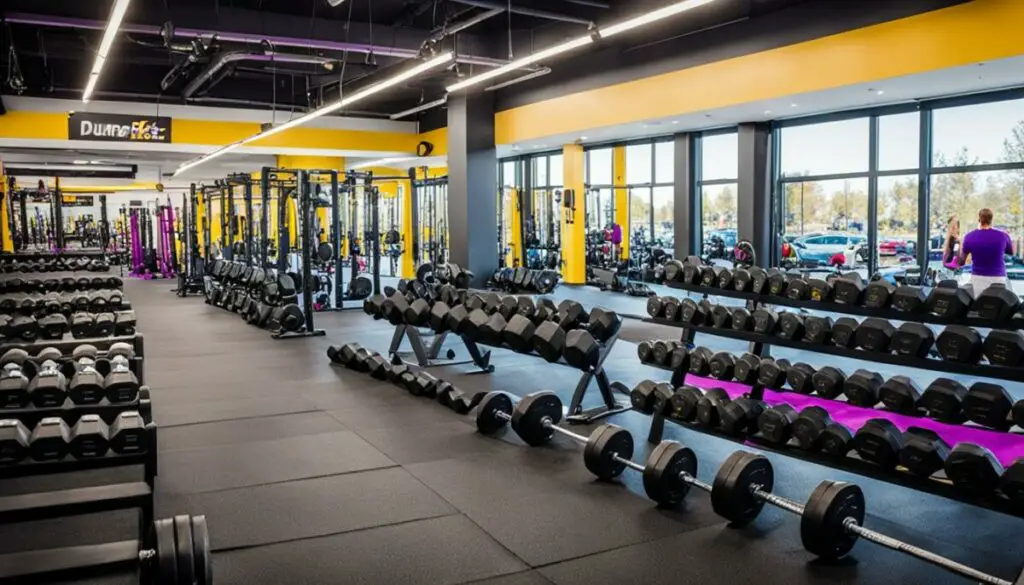
In recent years, free weights have gained immense popularity among fitness enthusiasts as the preferred method of strength training. Many individuals are opting for exercises that involve the use of dumbbells and barbells, recognizing the numerous benefits they offer for building muscle, improving strength, and enhancing overall fitness.
A key factor contributing to the surge in popularity of free weights is the rise of CrossFit. This high-intensity fitness program incorporates various functional movements that utilize weights, making it a natural fit for free weight training. CrossFit athletes have showcased the effectiveness of free weight exercises in developing well-rounded strength and athleticism.
Gym owners and operators have been quick to respond to the growing demand for free weight training. To meet the needs of their members, many gyms have added more dumbbell racks and squat racks, ensuring ample availability of free weights for those looking to incorporate them into their workouts.
With the increasing popularity of free weights, it is evident that individuals are recognizing the advantages of this type of training over traditional machines. Free weights offer greater freedom of movement, activate more muscle groups, and provide a greater challenge to the body’s stabilizing muscles. They also promote functional strength that translates into real-life activities and sports.
As the fitness industry continues to evolve, it is clear that the shift towards free weight training is here to stay. Gym-goers are embracing this versatile and effective approach to strength training, and gyms are adapting their offerings and equipment to meet the demand.
“Free weights provide a more dynamic and engaging workout experience, allowing individuals to perform a wide range of exercises that target specific muscles and movement patterns. This versatility makes free weight training an excellent choice for those looking to build strength, improve athletic performance, and enhance overall fitness.”
The Benefits of Free Weight Training
Let’s take a closer look at the key benefits that have contributed to the popularity of free weight training:
- Functional Strength: Free weight exercises engage multiple muscle groups simultaneously, helping individuals develop functional strength that translates into real-life movements and activities.
- Stabilizer Muscle Activation: Unlike machines that provide stability, free weights require the activation of stabilizer muscles to maintain balance and control throughout the exercise.
- Greater Range of Motion: Free weight exercises allow for a wider range of motion, promoting flexibility and joint mobility.
- Core Engagement: Many free weight exercises require the activation of the core muscles to stabilize the spine and maintain proper posture.
- Progressive Overload: With free weights, it is easier to gradually increase the resistance, allowing for progressive overload and continuous muscle growth.
By incorporating free weight training into their workouts, individuals can reap these benefits and achieve their fitness goals more effectively.
| Benefits of Free Weight Training | |
|---|---|
| Functional Strength | ✓ |
| Stabilizer Muscle Activation | ✓ |
| Greater Range of Motion | ✓ |
| Core Engagement | ✓ |
| Progressive Overload | ✓ |
The Future of Strength Training
As the fitness industry continues to evolve, it is clear that free weight training will remain a prominent aspect of strength training. With the numerous benefits it offers, it is expected that more individuals will gravitate towards free weight exercises to achieve their fitness goals.
Gyms and fitness facilities will continue to prioritize the availability of free weights and ensure that their equipment offerings meet the growing demand. This includes the addition of more dumbbell racks, barbells, and squat racks, as well as providing adequate space for individuals to perform free weight exercises safely and efficiently.
Moreover, the popularity of free weight training has extended beyond traditional gym settings. Many individuals are creating home gyms and investing in their own sets of dumbbells and barbells, allowing them to enjoy the benefits of free weight training in the comfort of their own homes.
With the growth and recognition of free weight training as an effective and versatile strength training method, it is an exciting time for fitness enthusiasts to embrace this trend and unlock their full potential.
Gym Design Changes
Gym design has evolved to meet the changing exercise preferences of gym-goers, with a focus on creating open and functional spaces. In the past, gyms were often packed with equipment, making it challenging for members to navigate and find enough space to perform exercises effectively. However, modern gym designs have adapted to address these issues.
“The current trend in gym design is to maximize open spaces and create designated areas for functional exercises and free weight training,” says fitness industry expert, Sarah Thompson.
Gyms are now dedicating more space to open zones, allowing members to engage in a variety of exercises comfortably. This shift has been driven by the increasing popularity of functional training, which emphasizes movements that mimic real-life activities, as well as the preference for free weight training over machines.
“Gym-goers are no longer interested in being confined to machines; they want to incorporate diverse movements and challenge their bodies in dynamic ways,” adds Thompson.
Open spaces in gyms provide flexibility for various exercises, including kettlebell swings, lunges, and other functional movements. These areas allow individuals to perform exercises without feeling restricted or crowded by surrounding equipment.
Benefits of Open Spaces in Gyms
The inclusion of open spaces in gym design offers several benefits for members:
- More freedom of movement: Open spaces provide ample room for individuals to move freely and perform exercises that require wider ranges of motion.
- Reduced risk of accidents: With fewer obstacles and equipment in the way, the chances of accidents or collisions during workouts are minimized.
- Enhanced social interaction: Open areas create a sense of community and allow for interaction and support between members during workouts.
- Increased exercise variety: The availability of open spaces encourages individuals to explore a wider range of exercises and training modalities, leading to greater workout variety and overall fitness improvement.
“Open spaces in gyms promote inclusivity and support a diverse range of exercise preferences and goals,” explains Thompson. “They create an inviting environment that appeals to both novice and experienced gym-goers.”
Gym design adaptations, such as the incorporation of open spaces, reflect the evolving preferences of fitness enthusiasts and contribute to a more enjoyable and effective workout experience.
| Benefits of Open Spaces in Gyms |
|---|
| More freedom of movement |
| Reduced risk of accidents |
| Enhanced social interaction |
| Increased exercise variety |
The Future of Gym Trends
The fitness industry is constantly evolving, adapting to the changing exercise preferences of gym-goers. As people become more health-conscious and fitness-oriented, new trends emerge and shape the future of the gym industry. In this section, we will explore the evolving exercise preferences and future trends that will impact the way we work out.
The Rise of Strength Training
Strength training has gained immense popularity in recent years and is expected to continue its upward trajectory in the future. This form of exercise involves resistance training to build muscle strength and endurance, using free weights, machines, or bodyweight exercises. The growing interest in strength training can be attributed to its numerous health benefits, such as improved bone density, increased metabolism, and enhanced overall fitness.
Strength training has also gained popularity among women, challenging the stereotype that weightlifting is only for men. As more women embrace this empowering form of exercise, gyms are likely to invest in equipment and training programs specifically designed for women.
Expansion of Free Weights and Functional Training Equipment
In response to the increasing interest in strength training, gyms will likely expand their offerings of free weights and functional training equipment. Free weights, such as dumbbells and barbells, provide greater range of motion and require more muscle activation, making them a preferred choice for many fitness enthusiasts. Functional training equipment, such as kettlebells, resistance bands, and suspension trainers, allow for dynamic movements that mimic real-life activities, improving overall strength and mobility.
| Benefits of Free Weights | Benefits of Functional Training Equipment |
|---|---|
|
|
Technology Integration in Workouts
Technology will continue to play an increasing role in the future of gym trends. On-demand digital workout platforms, fitness apps, and wearable devices will provide gym-goers with convenient and diverse exercise options. These technological advancements enable individuals to personalize their workouts, track their progress, and access virtual training programs from the comfort of their own homes.
The Importance of a Welcoming Environment
Creating a welcoming and non-intimidating environment will remain a key aspect of gym branding in the future. Gyms that prioritize inclusivity, diversity, and support members of all fitness levels will attract a larger audience. The days of “gymtimidation” will be replaced by an atmosphere that encourages people to embrace a healthy lifestyle and feel confident in their fitness journey.
“At XYZ Gym, we believe in providing an inclusive environment where every individual feels supported and motivated to achieve their fitness goals.”
By fostering a sense of community, offering diverse classes and training programs, and promoting positive body image, gyms can create an atmosphere that appeals to a wide range of individuals seeking a healthier lifestyle.
In the next section, we will conclude our discussion by summarizing the key points covered and providing final thoughts on the relationship between Planet Fitness and squat racks.
Conclusion
In conclusion, Planet Fitness’s business model does not typically include squat racks at its clubs. The company’s focus is on creating a welcoming and non-intimidating gym environment for the majority of its members who are not serious weightlifters. While the absence of squat racks may seem limiting to some, it has not hindered Planet Fitness’s growth or popularity. With over 4.5 million members across 47 states and Puerto Rico, Planet Fitness has successfully attracted a large and diverse membership base with its affordable pricing and inclusive atmosphere.
The rise of strength training as a popular fitness trend has had a significant impact on the gym industry as a whole. Gym design and equipment offerings have adapted to meet the changing preferences of gym-goers. Many gyms, including Planet Fitness, have embraced functional training and the use of free weights as alternatives to traditional weightlifting equipment like squat racks. These adaptations have allowed gyms to cater to a wider range of exercise preferences and provide members with a variety of options to achieve their fitness goals.
Looking ahead, the future of gym trends will continue to evolve as exercise preferences and technology advance. Strength training is likely to remain a dominant trend, with gyms expanding their offerings of free weights and functional training equipment. The emphasis on creating a welcoming and non-intimidating environment will remain an essential aspect of gym branding. Additionally, advancements in technology, such as virtual workout platforms, will provide members with convenient and diverse exercise options. As the industry continues to evolve, gyms will strive to meet the changing needs and preferences of their members.
FAQ
Does Planet Fitness have a squat rack?
No, Planet Fitness does not typically have equipment like squat racks and Olympic benches at its clubs. The company’s focus is on providing a welcoming and non-intimidating environment for the majority of its members who are not serious weightlifters.
What is Planet Fitness’s business model?
Planet Fitness prides itself on its unique business model, which caters to the majority of gym-goers who are not bodybuilders or fitness enthusiasts. The company’s commercials often poke fun at serious weightlifters, and it has implemented “lunk alarms” that go off when someone grunts while lifting. The absence of squat racks is part of its business model.
How much does a Planet Fitness membership cost?
Planet Fitness offers an affordable monthly membership fee of $10, making it accessible to a wide range of individuals.
How many members does Planet Fitness have?
Planet Fitness has over 4.5 million members across 47 states and Puerto Rico.
Are there any squat rack options at Planet Fitness?
Typically, Planet Fitness does not have squat racks available at its clubs. The absence of squat racks is part of its business model, which focuses on providing a non-intimidating environment for its members.
What contributed to Planet Fitness’s growth and expansion?
Planet Fitness’s growth can be attributed to its low membership fees, unique branding strategy, and the popularity of its sponsorship of the TV show “The Biggest Loser.” The gym chain tripled in size from 242 clubs to over 750 clubs by the end of 2013.
What are the trends in gym membership in the United States?
According to the International Health, Racquet & Sportsclub Association (IHRSA), gym membership in the U.S. reached its peak in 2011 but declined to 17.5% of the population in 2012. However, Planet Fitness has continued to grow during this period, indicating that its business model resonates with a substantial portion of the population.
What has contributed to the rise of strength training?
New research highlighting the health benefits of strength training and the popularity of high-intensity gyms like CrossFit have contributed to the surge in popularity of strength training. Additionally, more women are participating in strength training, challenging stereotypes that weightlifting is exclusively for men.
How has the gym industry recovered post-pandemic?
The gym industry has seen a recovery post-pandemic, with a 3.6% increase in gym memberships in the United States in 2021 compared to pre-pandemic levels. The popularity of strength training and functional exercises has played a significant role in this recovery.
How have gyms adapted to changing exercise preferences?
Gyms have adapted their facilities and equipment offerings to meet the changing exercise preferences of their members. They are increasing the space allocated for strength training, adding more dumbbell and squat racks, and creating open areas for functional exercises like lunges and deadlifts.
How has exercise culture in America evolved over time?
Exercise culture in America has seen significant shifts over the past century. Weightlifting was initially associated with negative stereotypes, but it gained popularity with the introduction of strength training equipment in the 1970s and 1980s. The rise of cardio exercises in the mid-1900s shifted the focus away from weightlifting, but strength training has regained popularity in recent years.
Why has the demand for free weights increased?
Free weights, such as dumbbells and barbells, have become the preferred method of strength training for many fitness enthusiasts. The popularity of free weight training has increased, with the rise of functional movements and workouts like CrossFit that incorporate various functional movements using weights.
How has gym design changed to accommodate changing exercise preferences?
Gym design has shifted from cramming as much equipment as possible into a limited space to creating open zones for functional exercises and free weight training. Gyms are dedicating more space to exercises like kettlebell swings, lunges, and other functional movements to provide a less cluttered environment for members.
What does the future hold for gym trends?
The fitness industry will continue to evolve and adapt to changing exercise preferences. Gyms are likely to continue expanding their offerings of free weights and functional training equipment. Creating a welcoming and non-intimidating environment will remain a key aspect of gym branding, and technology, such as on-demand digital workout platforms, will play an increasing role in providing convenient and diverse exercise options.



